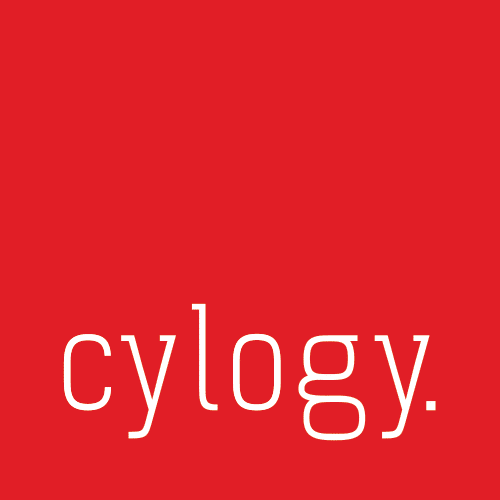2022 has been another great year for Cylogy. We’ve been busy, delivering a whole range of websites and apps for our clients, attending conferences (including some in-person), running client workshops and even planning for 2023. And we’ve also been busy writing for the Cylogy blog and CMSWire too.
In this post we’re going to explore some of the key themes and the related top posts and articles we’ve written during 2022.
Design Thinking
Design thinking is a powerful framework and set of tools and tactics that helps groups solve problems in a creative way. It’s an excellent approach to use when defining requirements around customer experience, and in recent years more and more organizations have started to use design thinking. During the year, Eduardo Moraes, Cylogy’s Director of Digital Strategy and Technology, wrote a series of articles about how to put design thinking into practice.
How to put design thinking into action takes a deep dive into design thinking, covering what it is, the essential pillars of design thinking workshops, and some of the specific tactics and techniques you can use. Ffrom Rose, Thorn, Bud through to Alternative Worlds. Eduardo explains how you can then use these tactics as a flexible toolbox for design thinking and apply this to different processes such as selecting a DXP.
6 tactics to make design thinking a success offers more very practical advice to get design thinking off the ground. These include ensuring that you adopt the right mindset and the importance of gathering a diverse group of participants to get the best possible results. Following these kind of tactics can make all the difference to getting the very best out of a design thinking workshop.
Headless Publishing
The rise of headless publishing has been one of the themes of 2022, with more and more organizations decoupling their backend CMS and frontend experience, and tech vendors emphasizing their headless credentials. It was a theme we also explored during the year.
5 benefits of a using a headless CMS attempts to bridge the gaps in awareness about headless publishing that we sometimes encounter with customer experience teams, and which is impacting the more widespread adoption of headless publishing. Here, I cover five of the key benefits of headless including greater flexibility and support for omni-channel publishing, as well as some of the disadvantages too.
Why it’s essential to plan for your first headless project offers learning and insights that we’ve gathered from being involved in multiple headless projects. Cylogy’s VP of Services, Lindsay Sullivan, explores why it’s s so important for anyone starting out on their headless journey to plan ahead, and not to assume it will all be straightforward. She details what to expect including the need to rethink staff roles, build a realistic timeline and recalibrate DevOps.
Content management
In my book, content is still king and during 2022 I looked at a couple of aspects of content management that have proved to perennial topics across the years.
Responsibility for your website content: 9 tactics to drive accountability looks at how teams can encourage content owners throughout their organization to take a more active approach to managing the website content they are responsible for and keeping it up to date. I cover nine tactics that digital teams can try to instil more accountability; some of these are around establishing clarity around ownership, while others are about embedding the right processes and support, and using analytics to encourage improvement.
7 essential ingredients of a successful content migration looks at what you need to do to plan a good content migration for a website project, including carrying out a content audit, mapping out redirects and even leveraging automation. Some of the “ingredients” mentioned involve not leaving everything to the last minute in order to make the migration as easy as possible.
Digital Experience Platforms (DXPs)
In 2022 the DXP market has continued to be highly competitive. One area of competition has been the support for composable architecture and the ability to create a more flexible DXP, made out of cloud-native, best-of-breed solutions that work together through APIs. It’s an area that we covered extensively, in particular looking at Sitecore, a DXP that has significantly pivoted to the composable model.
MACH architecture and how it supports Sitecore’s vision of a composable DXP covers Sitecore’s pivot in detail, exploring the importance of MACH (Microservices, API-first, Cloud native, Headless) architecture plays in the composable DXP model and how that helps support Sitecore’s new vision. The article also covers the relative benefits and is a good overview for anyone wanting to know about the what and the why of MACH architecture.
Why Sitecore’s XM cloud is a landmark in Sitecore’s history covers the release of Sitecore XM Cloud, essentially the launch of Sitecore’s headless CMS that can sit at the center of composable DXP. The post explores how Sitecore XM completes the story of Sitecore’s composable direction and reflects on a milestone in a platform that had always stressed its credentials as a single, integrated solution.
Selecting a Digital Experience Platform (DXP): 8 factors to consider takes a platform-agnostic view of the different factors that teams need to consider in choosing a DXP. Some are obvious – like the range of features and cost and licensing options, but others less so. For example, it’s also important to look at elements such as the wider partner ecosystem and how well the platform plays with others.
Looking to the future
The world of digital customer experience is constantly changing and evolving, and it’s always important to be thinking about what’s on the horizon. 4 challenges to the metaverse we need to overcome covers the metaverse, an exciting topic that is getting increasing amounts of coverage, partly due to Meta’s investment in the space. But it’s also receiving a good dose of cynicism. In the article I outline four of the challenges we need to overcome before the metaverse gets more traction and can move forward. One of these is being able to gain some consensus around what the metaverse actually is, while another is trying make more advances in current experiences, which still lack maturity. Dispelling some confusion and also ensuring parties work together will help to build a future metaverse that will benefit us all.





